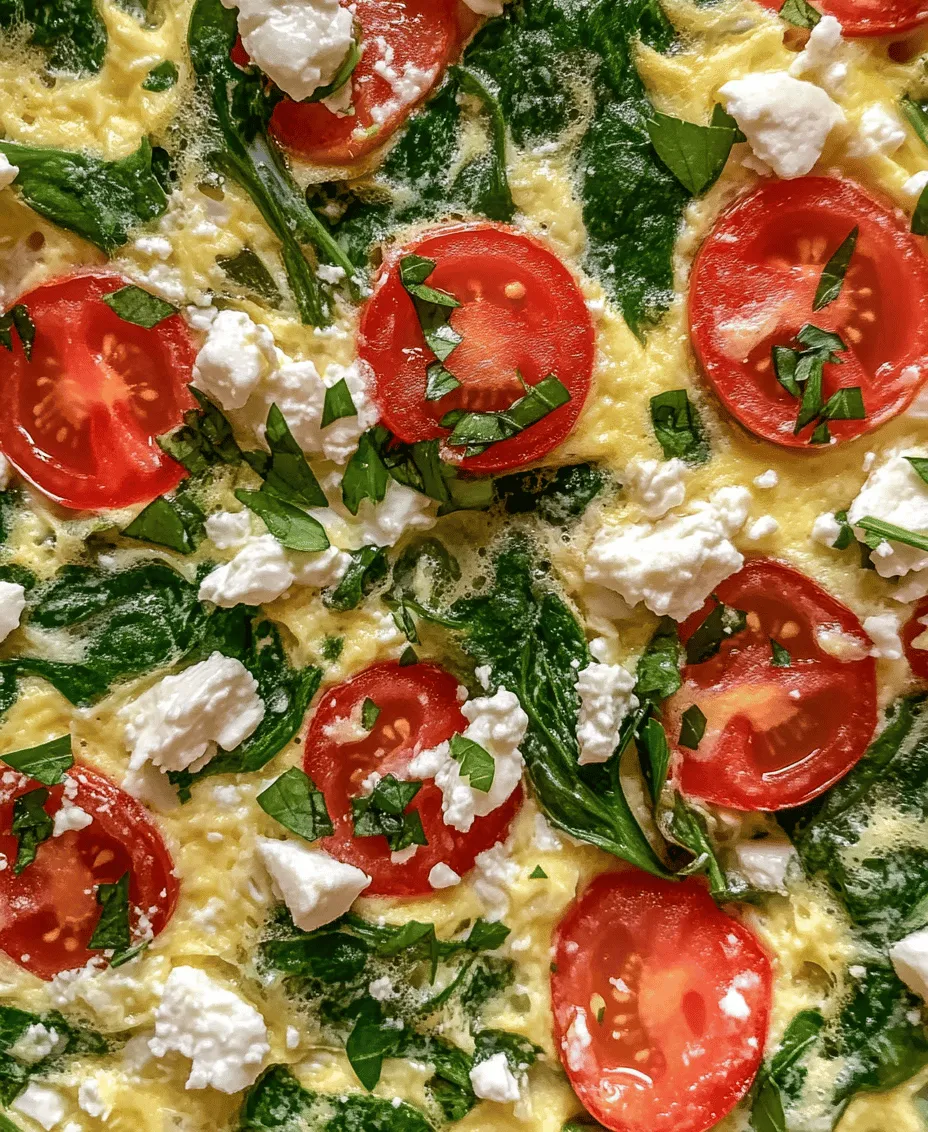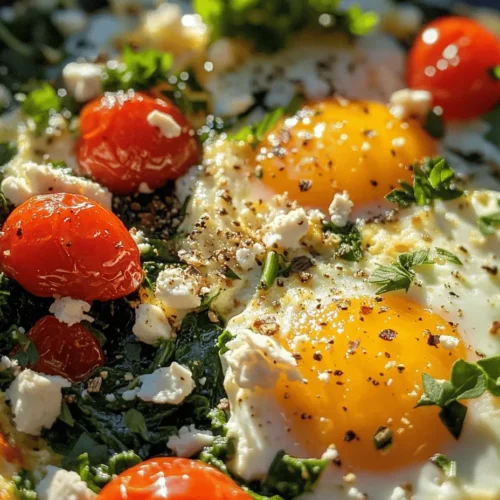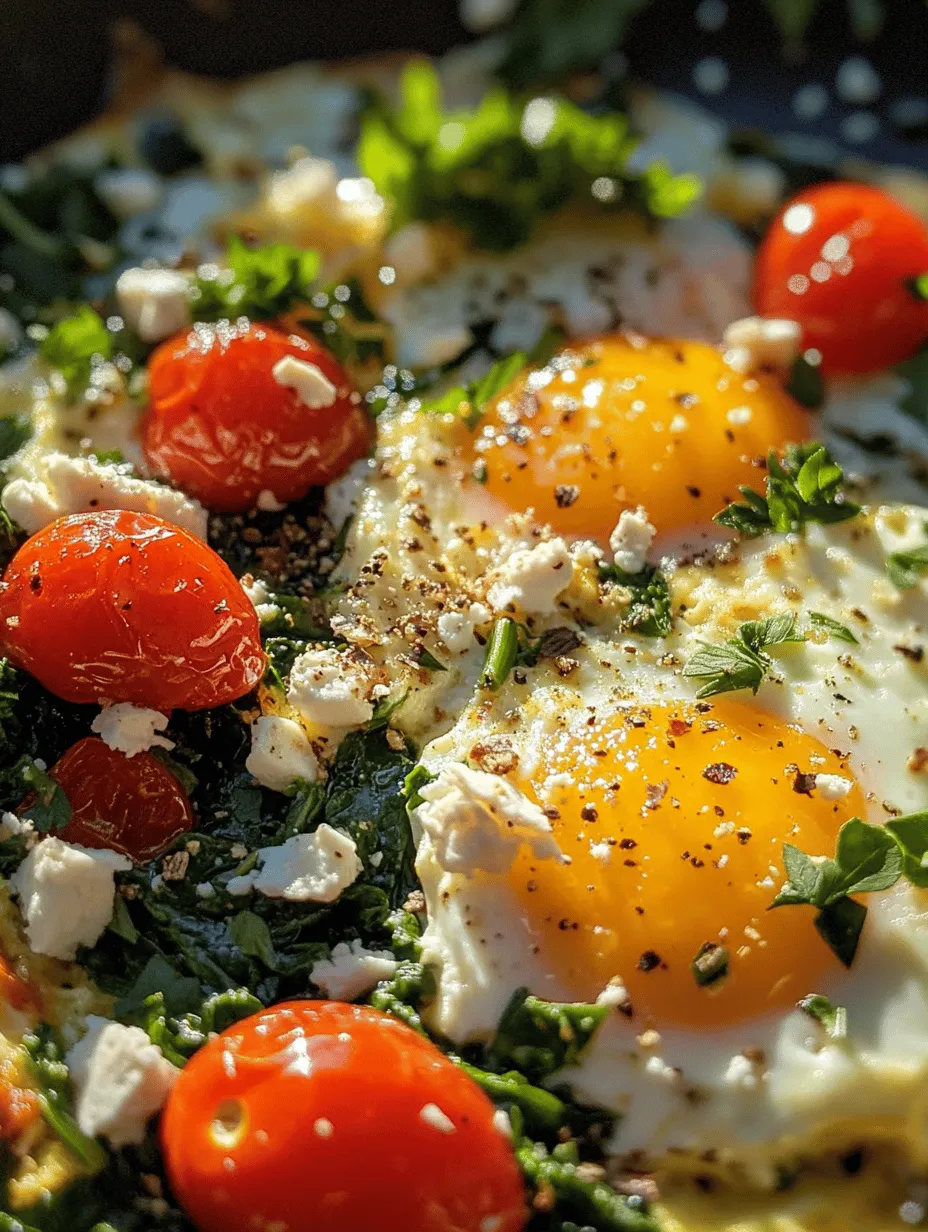Discover the delightful Morning Sunshine Frittata, a vibrant dish perfect for breakfast or brunch. This easy-to-follow recipe combines fresh vegetables, creamy feta cheese, and fluffy eggs, delivering a nutritious start to your day. With its bright colors and fresh flavors, this frittata not only looks appealing but also packs a punch in terms of nutrition. Whether you’re hosting a weekend brunch or looking for a quick weekday meal, this frittata is not only delicious but also packed with essential nutrients.
Frittatas have gained popularity in modern cuisine due to their versatility and ease of preparation. They can be made with various ingredients, making them suitable for any dietary preference. In this article, we’ll explore the ingredients, preparation steps, and some creative variations to customize your frittata. Let’s dive into the world of frittatas and learn how to make this easy and satisfying dish that brightens up your breakfast table.
Understanding Frittatas
Defining the Frittata
A frittata is an Italian egg dish that is similar to an omelet or a crustless quiche. It typically incorporates a mixture of beaten eggs and various ingredients such as vegetables, meats, and cheeses, all cooked together in a skillet. What sets a frittata apart is its cooking method; it is started on the stovetop and then finished in the oven, resulting in a fluffy texture and a beautifully set top. This cooking technique allows for a more even distribution of ingredients and a delightful, golden-brown finish.
Exploring the Origins of Frittatas
The origin of the frittata can be traced back to Italy, where it is believed to have been created as a way to use up leftover ingredients. The word “frittata” comes from the Italian verb “friggere,” which means “to fry.” Traditionally, frittatas were made with whatever vegetables and proteins were available, making them an economical and practical dish. Over the years, the frittata has evolved into a beloved breakfast and brunch staple around the world, celebrated for its simplicity and versatility.
Key Differences Between Frittatas and Other Egg Dishes
Frittatas are often confused with omelets and quiches, but key differences set them apart:
– Cooking Method: While omelets are usually cooked quickly on the stovetop and folded, frittatas are begun on the stovetop and then transferred to the oven to finish cooking. This method ensures that the frittata has a fluffy texture and allows for an even cooking of all ingredients.
– Ingredients: Frittatas are typically made with a variety of ingredients mixed into the eggs, whereas omelets usually contain a few fillings that are folded into the egg base. Quiches, on the other hand, have a crust and are custard-based, making them richer and more filling.
– Serving: Frittatas can be served hot or at room temperature, making them perfect for potlucks or brunches. They can also be sliced into wedges and served as appetizers or snacks, adding to their versatility.
Ingredients Breakdown
Essential Ingredients for the Morning Sunshine Frittata
To prepare a delicious Morning Sunshine Frittata, you will need the following key ingredients:
– Eggs: The Foundation of the Dish
Eggs are the star ingredient in any frittata, providing structure, flavor, and protein. For our Morning Sunshine Frittata, large eggs are the best choice, as they whip up to create a light and fluffy texture.
– Milk: Adding Creaminess
A splash of milk enhances the creaminess of the frittata. Whole milk or a dairy-free alternative can be used, depending on your dietary preferences.
– Vegetables: Nutritional Powerhouses
Fresh vegetables add color, texture, and essential nutrients to the frittata. For this recipe, we’ll use bell peppers, spinach, and tomatoes, but feel free to customize based on seasonal produce or personal preferences.
– Feta Cheese: A Flavorful Addition
Crumbled feta cheese provides a tangy and savory flavor that complements the eggs and vegetables beautifully. If feta isn’t your favorite, you can substitute it with goat cheese or cheddar for a different taste experience.
– Olive Oil: Cooking and Flavor Enhancer
Extra virgin olive oil is ideal for sautéing the vegetables and adds a rich flavor to the dish. Its healthy fats also contribute to the overall nutritional value of the frittata.
– Herbs: The Finishing Touch
Fresh herbs such as parsley, basil, or chives can elevate the flavor of your frittata. They add brightness and freshness, making every bite a delightful experience.
Health Benefits of Each Ingredient
– Nutritional Value of Eggs
Eggs are a powerhouse of nutrition, packed with high-quality protein, vitamins, and minerals. They contain essential amino acids and are rich in B vitamins, which play a critical role in energy metabolism. Additionally, eggs are a good source of choline, which is vital for brain health.
– Benefits of Spinach and Other Vegetables
Spinach is loaded with antioxidants, vitamins A, C, and K, and is a great source of iron and calcium. Incorporating vegetables like bell peppers and tomatoes not only boosts the flavor but also enhances the nutritional profile of the frittata. These vegetables are rich in vitamins and provide dietary fiber, which aids digestion.
– The Role of Feta Cheese in a Balanced Diet
Feta cheese is lower in calories and fat compared to many other cheeses, making it a great choice for those looking to enjoy cheese without excess calories. It is also a good source of calcium, which is essential for healthy bones.
Preparation Steps
Prepping Your Kitchen and Tools
Before diving into the cooking process, it’s essential to set up your kitchen for success. Gather all your ingredients and cooking tools to streamline the preparation.
Essential Cooking Equipment for Frittatas
– A large oven-safe skillet (cast iron or non-stick)
– Mixing bowls for whisking eggs and combining ingredients
– A whisk or fork for beating the eggs
– A spatula for stirring and serving
– A cutting board and knife for chopping vegetables
Preparing Ingredients: Chopping and Measuring
Start by washing and prepping your vegetables. Dice the bell peppers and tomatoes, and roughly chop the spinach. It’s important to have all ingredients measured and ready to go before you start cooking, as the frittata will come together quickly.
Step-by-Step Instructions
Preheating the Oven: Importance and Tips
Preheat your oven to 375°F (190°C). Preheating is crucial for ensuring that your frittata cooks evenly and develops a lovely golden-brown top. While the oven is heating, you can proceed with sautéing the vegetables.
Sautéing Vegetables: Techniques for Optimal Flavor
Heat a tablespoon of olive oil in your skillet over medium heat. Add the diced bell peppers and sauté for about 3-4 minutes until they begin to soften. Next, add the chopped tomatoes and spinach, cooking for an additional 2-3 minutes until the spinach wilts and the tomatoes start to break down. This step not only brings out the flavors of the vegetables but also removes excess moisture, preventing a watery frittata.
Whisking Eggs: Achieving the Perfect Consistency
In a mixing bowl, crack the eggs and add a splash of milk. Whisk vigorously until the mixture is smooth and uniform. The incorporation of air into the eggs will help achieve a fluffier texture once cooked. Season with salt and pepper to taste, and if you like, add some chopped herbs for an extra burst of flavor.
Combining Ingredients: Creating a Balanced Mixture
Once the vegetables are sautéed, reduce the heat to low. Pour the egg mixture over the cooked vegetables in the skillet, gently stirring to ensure even distribution. Crumble the feta cheese on top, allowing it to nestle into the egg mixture. If you’re using herbs, sprinkle them on now for an aromatic touch.
Cooking the Frittata: Stovetop vs. Oven Techniques
Cook the frittata on the stovetop for about 2-3 minutes, just until the edges begin to set. Then, transfer the skillet to the preheated oven. Bake for 15-20 minutes, or until the center is set and the top is lightly golden. Keep an eye on it to prevent overcooking—an overcooked frittata can become dry and less enjoyable.
This step-by-step guide sets you on the path to creating a delicious Morning Sunshine Frittata that not only satisfies your taste buds but also nourishes your body. As you progress through these steps, you will embrace the vibrant colors and flavors of fresh ingredients, making breakfast or brunch a truly delightful occasion.

Baking the Frittata
Understanding the Baking Process
Baking a frittata is a straightforward process that yields a satisfying and nutritious meal. The key is to understand the baking process to achieve a perfectly cooked frittata every time.
Setting the Right Temperature
The ideal baking temperature for a frittata is typically around 350°F (175°C). This moderate temperature allows the eggs to set evenly without browning too quickly. Preheat your oven to this temperature before placing your frittata in to ensure an even cook.
If you’re using a cast-iron skillet, you can start cooking the frittata on the stovetop to set the bottom before transferring it to the oven. This technique helps create a nice crust while the top cooks through gently.
Signs of a Perfectly Baked Frittata
Knowing when your frittata is done baking is crucial. The perfect frittata should be puffed up and slightly golden around the edges. The center should be set but still a little jiggly; it will continue to cook after being removed from the oven. A toothpick inserted into the center should come out clean, indicating that the eggs are fully cooked.
How to Avoid Overcooking or Undercooking
Overcooking a frittata can lead to a dry texture, while undercooking can leave you with runny eggs. To avoid these pitfalls, keep an eye on the frittata as it bakes. Start checking for doneness a few minutes before the recommended baking time. If you notice that the edges are browning too quickly, you can cover the frittata loosely with aluminum foil to prevent further browning while allowing the center to set.
Serving Suggestions
Plating the Morning Sunshine Frittata
Once your frittata is baked to perfection, it’s time to serve it. Allow it to cool for a few minutes in the pan before slicing. Use a sharp knife or a spatula to carefully cut wedges or squares, depending on your serving preference.
For an elegant presentation, serve frittata slices on individual plates, or present the whole frittata in the skillet for a rustic look.
Best Practices for Slicing and Serving
When slicing your frittata, make sure to cut through the entire depth to ensure clean pieces. If you’re using a non-stick pan, you can gently use a spatula to lift out the slices. Serve warm, but frittatas can also be enjoyed at room temperature.
Garnishing Ideas: Herbs and More
To elevate the visual appeal and flavor of your frittata, consider garnishing with fresh herbs such as parsley, chives, or basil. A sprinkle of freshly grated cheese or a drizzle of olive oil can add an extra touch of richness. If you want to add a bit of heat, a few dashes of hot sauce or a sprinkle of red pepper flakes can liven up the dish.
Complementary Side Dishes to Enhance Your Meal
Pair your frittata with complementary side dishes to create a well-rounded meal. A simple mixed green salad dressed with lemon vinaigrette adds freshness and acidity. For something heartier, consider serving toast or roasted potatoes on the side. Fresh fruit, such as berries or sliced melons, can provide a sweet contrast to the savory frittata.
Variations and Customizations
Exploring Flavor Variations
One of the greatest joys of making a frittata is its versatility. You can customize it to suit your taste preferences or dietary needs.
Adding Different Vegetables
Feel free to experiment with different vegetables to create your unique flavor profile. Spinach, bell peppers, mushrooms, and tomatoes all work well. Try seasonal vegetables to keep things fresh and exciting. For example, in late spring, consider adding asparagus or artichokes for a seasonal touch.
Cheese Alternatives: Cheddar, Goat Cheese, and More
While the classic frittata often includes a cheese like feta, you can switch it up with different varieties. Goat cheese adds a tangy flavor, while sharp cheddar provides a rich, creamy texture. For a more decadent option, consider using Gruyère or fontina cheese. Dairy-free alternatives such as almond or cashew cheese can also work beautifully for those following a vegan or lactose-free diet.
Protein Additions: Ham, Bacon, or Tofu
Adding protein can make your frittata even more filling. Diced ham or cooked bacon can lend a smoky flavor, while sautéed tofu or tempeh offers a hearty vegetarian option. If you want to keep it light, consider incorporating shredded chicken or turkey for an extra protein boost.
Seasonal Variations
Frittatas can be made year-round by utilizing seasonal ingredients. Here are some ideas for seasonal variations:
Spring Frittata with Asparagus and Peas
As spring approaches, fresh asparagus and peas become abundant. Incorporate these vibrant vegetables into your frittata for a light and refreshing dish. Add a sprinkle of fresh dill or mint for an aromatic finish.
Summer Frittata with Zucchini and Corn
In the summer, zucchini and sweet corn are at their peak. These ingredients add sweetness and texture to your frittata. A handful of fresh basil or oregano can enhance the summer flavors beautifully.
Fall Frittata with Pumpkin and Sage
As autumn arrives, consider a frittata featuring pumpkin and sage. The sweetness of the pumpkin pairs perfectly with the earthy notes of sage. Serve with a sprinkle of nutmeg for an added touch.
Winter Frittata with Kale and Root Vegetables
During the colder months, hearty vegetables like kale and root vegetables such as sweet potatoes or carrots shine. This combination not only adds nutrients but also creates a comforting dish perfect for chilly mornings.
Storage and Reheating Tips
How to Properly Store Leftover Frittata
Frittata is a wonderful dish to make ahead of time, and it stores well. To ensure your leftovers maintain their freshness, follow these storage guidelines.
Refrigeration Guidelines
If you have leftovers, allow the frittata to cool completely before transferring it to an airtight container. Stored in the refrigerator, it will last for up to three to four days. If you anticipate not finishing it within that timeframe, consider freezing portions for longer storage.
Freezing for Longer Storage
To freeze your frittata, slice it into individual portions and wrap each piece tightly in plastic wrap or aluminum foil. Place the wrapped slices into a freezer-safe bag or container. Properly stored, the frittata can last up to three months in the freezer.
Reheating Methods
When you’re ready to enjoy your frittata again, reheating it properly is essential to maintain its flavor and texture.
Oven vs. Microwave: Which is Better?
The oven is the best option for reheating frittata, as it helps retain the texture. Preheat your oven to 350°F (175°C), place the frittata on a baking sheet, and cover it loosely with foil to prevent it from drying out. Heat for about 10-15 minutes, or until warmed through.
While the microwave is a quicker option, be cautious as it can lead to a rubbery texture. If using the microwave, place a slice of frittata on a microwave-safe plate and cover it with a damp paper towel. Heat in 30-second intervals, checking until warmed through.
Tips for Maintaining Texture and Flavor
To maximize flavor and texture, consider adding a sprinkle of fresh herbs or a dash of seasoning when reheating. This simple tip can reinvigorate the dish, making it feel freshly cooked.
Conclusion
The Morning Sunshine Frittata is a versatile and delicious recipe that can become a staple in your breakfast rotation. With its combination of fresh ingredients, ease of preparation, and endless customization options, it’s a dish that can cater to various tastes and dietary preferences. Not only is it packed with nutrients, but it also provides a satisfying meal that can be enjoyed at any time of the day.
Whether you’re new to cooking or a seasoned chef, this frittata is sure to impress and delight, making it a must-try recipe for anyone looking to elevate their breakfast experience. Enjoy the process of making this dish and feel free to experiment with different ingredients to make it your own. Happy cooking!



